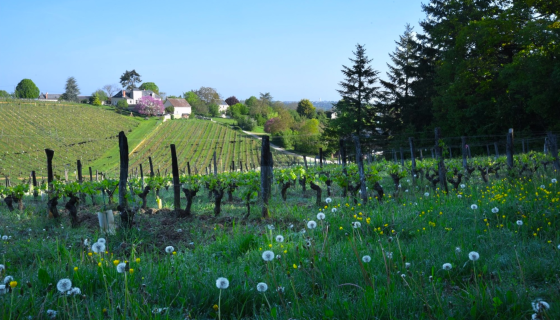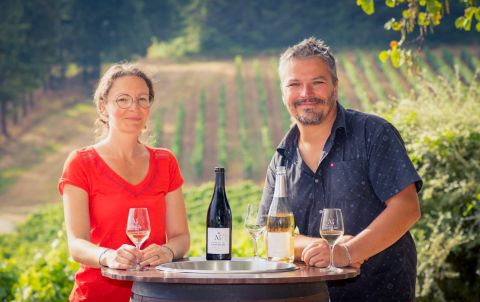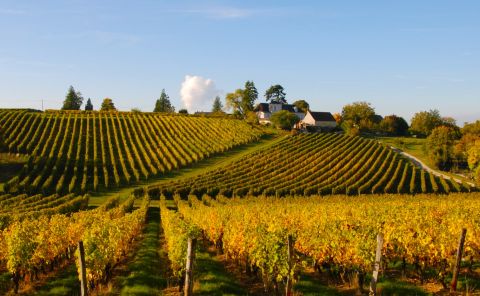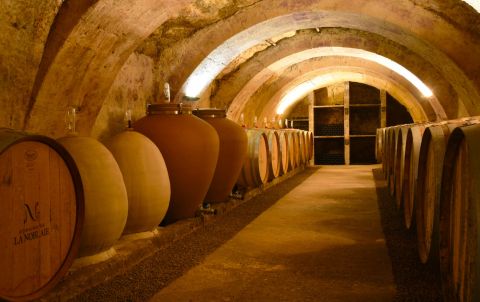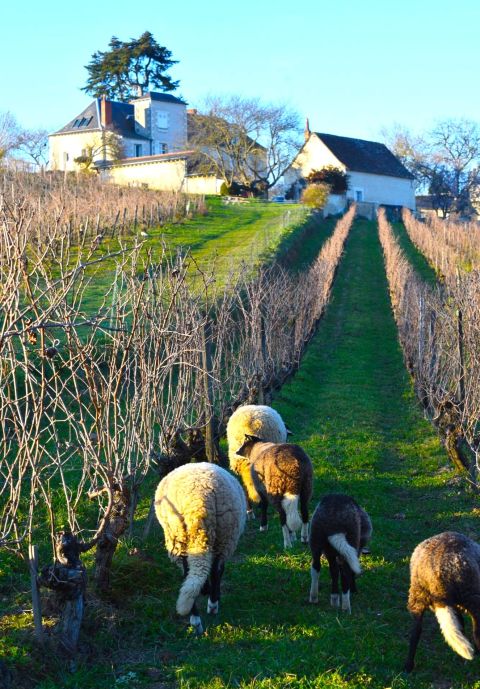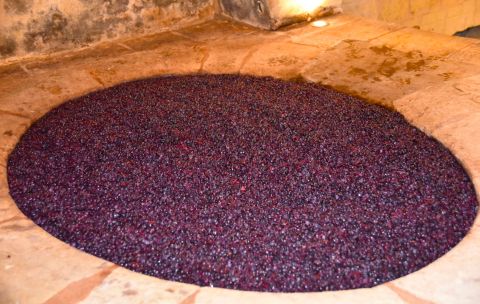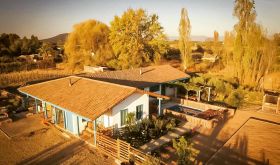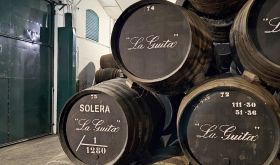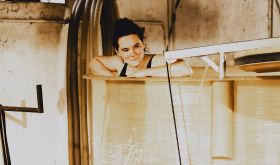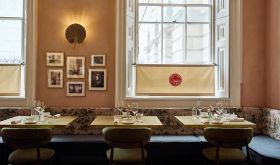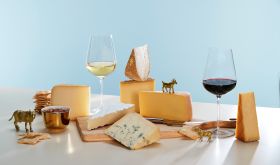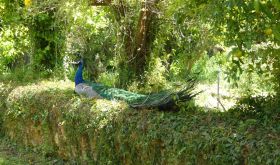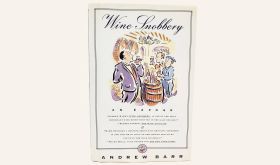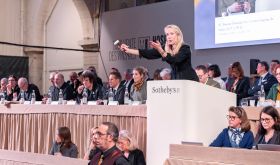He’s greying at the wings but has the energy of a 25-year-old. The enthusiasm of a child. I’m listening, kind of entranced and also laughing (in empathy) at his tech-phobe exasperation. It’s taken a while to get this online meeting underway. Neither of us, it seems, is very good at working out how to share his presentation online. Eventually he just sends it to me by email and we do an online-offline hybrid.
Jérôme Billard pauses while showing me photos of the estate and exclaims, ‘See!! See that there! Look at this photo and tell me what you see!’ I look at the beautiful drone shot more carefully, and suddenly it becomes clear: a golden block of leaves in an otherwise still-green autumn vineyard. He noticed this every year while walking the vineyards, he tells me. They looked at it more closely and realised that everything about that one part of the vineyard is different: soil, bedrock, light, temperature, seasonal shadow and wind exposure.
He shows me their ‘workers’ map of the vineyard. It’s a precise, satellite-based map; coded, numbered and showing exactly where the influences of woodland, elevation and topography lie: vineyards are delineated into parcels, parcels are divided into sub-parcels marked with numbers of rows and of half rows, all of which is then overlaid with the outline of an event – the area impacted by the savage frost of 2016 is clearly delineated in duck-egg blue and white crosses. It can be, he tells me, three or more degrees cooler in that part of the vineyard than in the higher areas.
After clocking up a degree in oenology from Burgundy, an eight-month stage at Petrus, a year at Dominus Estate in Napa and a stint at Sacred Hill Estate in New Zealand, Jérôme Billard took over his family’s estate in Chinon in 2003.
It came with remarkable historical pedigree (think Middle Ages and Crusaders) but not a great deal of fine-wine pedigree. When Billard’s grandparents bought the estate in 1952, the estate had been very neglected. They had to replant most of the vineyards, although there still are a couple of blocks pre-dating World War II. They did retain the many relics left in the winery, including tools, an old press and an extraordinary 17th-century amphora-like fermentation vessel sunken into the floor (see photos below).
Billard returned to Chinon with international perspective, vision, ideas, discipline and no shortage of ambition. Over two decades he doubled the vineyard area, converted the estate to organic viticulture and built a new winery. He also changed the approach to winemaking. The family used to produce three labels: one red, one white and one rosé – the latter two really just for family consumption. Today they make eight cuvées, focusing on the different terroirs of the estate vineyards. Billard and his agronomist partner, Élodie Peyrussie, have clearly invested a lot of time, effort and money into understanding their terroir in detail – including hiring a geologist and soil consultant to analyse the entire estate.
He has worked organically since he took over in 2003, and they do everything in their 25 ha (62 acres) of vineyards by hand. ‘We do our farming by walking the rows and looking. Every parcel must be farmed differently. Every parcel is picked differently and sometimes three times. There are different times for everything. It is not good to sleep well’, and he interrupts himself with a laughing eye roll, hands in the air, ‘but you always have lots of questions!’
It seems he likes the questions. In 2008, during a cool vintage, they were dropping bunches because acidities were too high; Billard decided this was a waste. ‘I tried to make a sparkling wine which is impossible to do with Cabernet Franc because it is terrible for reduction … so it took me a long time to get it right!’ He laughs, and judging by his expression, is remembering a few disasters. ‘We eventually worked out a complicated way around that.’ Then his neighbour wanted to be a shepherd, ‘so now we have 80 Mosel sheep, mowing the vineyard in winter’. He shrugs, ‘It works! I don’t have time to chase sheep; he is happy.’
All Billard’s wines are beautiful. I could have happily made every single one of them a wine of the week. That sparkling wine – a blend of two reserve wines from single vintages, a cuve perpétuelle and 10% fermenting juice, all blended into bottle for secondary fermentation – tastes as if it has been spun from gossamer. And if you’re looking for something truly special, look for his Pierre de Tuf, made from whole berries poured into that centuries-old stone vat carved into the tuffeau. It tastes – I think – like a liquid Rachmaninoff piano concerto.
But the wine I’ve chosen is simpler than that. Simpler, not simple.
I chose Le Temps des Cerises for three reasons. One: it’s exceptionally good value – The Wine Society’s price of £12.95 for a wine of this quality is insanely low. Two: as spring explodes across northern climes, the wine embodies everything the season brings: energy, light, life; that feeling of stretching out and reaching for blue sky with the tips of your fingers while wriggling green grass under your bare toes. Three: it’s so delicious you’re hovering between the desire to do cartwheels between sips, or sip between sips.
It is, of course, 100% Cabernet Franc, as the appellation of Chinon requires. It’s just 12.5% abv and is a blend of fruit from all of their vineyards (‘not the best parts’, says Billard, with nonchalant honesty. ‘It comes from the parcels that sometimes have tight tannins, sometimes lower maturity, and younger vines.’) It undergoes spontaneous fermentation in stainless steel and is bottled early. Billard says that 2023 was a challenging vintage: very high disease pressure, hot, lots of rain, lots of rot issues. ‘But’, he shrugs, ‘it ended up to be a very fruity, juicy vintage. An early-drinking vintage. Not for keeping!’
Who cares about keeping when a wine tastes this good? This wonderfully juicy Chinon explodes in the mouth. The tannins pucker up, roll into a ball, tumble turn, jumping-jack and ta-da! Standing there: red fruit in open palms, like a clever little magician. A little parkour, street-dancing, defiant. Like a truant kid; playful and smart and will make you laugh. Pencils in fingers, raspberry-stained chin, cut grass, daisies in hair. A wine that defies time, believes in Peter Pan, wants you to lie in the grass and count clouds, wants to splash you with red, red glee until you get up and dance.
You could chill it on hot days; drink it with grilled salmon in green goddess dressing; add it to a table laden with pizza; sip it while you stir that asparagus risotto; pour it in a glass while you sit in the deep grass of your No Mow May garden (the other hand in a bowl of fragrant, slippery kalamata olives); light the candles and have it with smoked duck salad; light the fire and have it with a fiery chickpea stew on a dark winter night. It really is that kind of wine. But right now, as I write this, it’s early May and the sun is shining. I’m drinking it as the first rosebuds of my ancient rose climbers and bushes burst into bud. That’s a good enough reason for me.
In Europe, it’s available in France, Germany, Belgium, Denmark.
In the UK, The Wine Society has it an incredibly good price of £12.95 a bottle, a few pence cheaper if you buy a case of six, and a little more expensive but still very good value if you opt for half-bottles at £7.25. Extra kudos and appreciation go to wine merchants (and producers) selling half-bottles! In the US, the wine is imported by European Cellars in Charlotte, NC; 2023 (SRP $22) is the current vintage, but as is often the case, older vintages are available in various markets, and I’m confident that they will be just as good.
Check out notes on many other wines from Domaine de la Noblaie in our tasting notes database.

